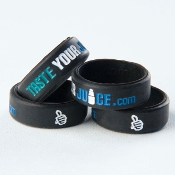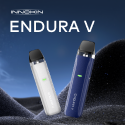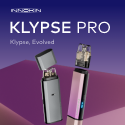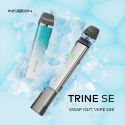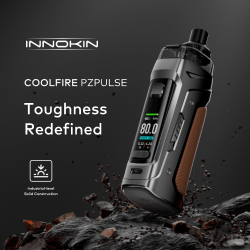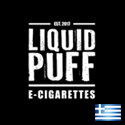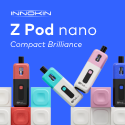A BATTERY MOOCH POST: Hohm Tech Hohm Run 39.1A 3023mAh 21700…slightly overrated but decent performer
This is a decent performing 21700 cell that has a slightly exaggerated current rating. It performs a bit better than the Sanyo NCR20700A but not as good as the Molicel P42A, Samsung 40T, or Samsung 30T 21700’s.
The capacities for the four Hohm Run (not Hohm Run XL) cells I tested ranged from 3054mAh to 3133mAh at 600mA (0.2C) down to 2.5V. This isn’t great consistency but is typical of cells not from the major manufacturers. I am rating it the same as Hohm Tech did, 3023mAh.
It runs a bit too hot in my testing at its claimed rating of 39.1A, about 85°C-86°C, to be rated that high as that goes over Hohm Tech’s 80°C limit. I have always measured cell temperatures a bit higher than what Hohm Tech measures and we have discussed this at length. I stand by my measurements though and every test is done the same way so direct comparisons can still made between the different cells I test.
I am rating these cells at 35A continuous with a temperature limited rating of 45A (Hohm Tech’s temp-limited rating is 49.5A). This means you could run this cell at 45A as long as you do not let it get hotter than 80°C. But I recommend not going that high as it increases your risks, reduces performance, and speeds up the aging of the cell.
This cell has Hohm Tech’s new wattage-based ratings. It is rated at 112W continuous and has a 142W temperature-limited “max” rating. As long as you don’t let the cell reach 80°C Hohm Tech says you can run it at 142W. They do say this reduces the life of the cell though and I agree. To reduce risk, extend overall cell life, and increase performance I recommend not going over about 35A or 100W. All cells are stressed when you run them near or above their ratings so this is not a recommendation just for the Hohm Run cell.
Some of the ratings on the wrap are still printed quite small over a patterned background. This makes them hard to read, reducing their usefulness to vapers.
Hohm Tech (www.hohmtech.com) donated cells for testing, thank you!
Ratings graphic: https://imgur.com/a/B9gmQ7l
Test report: https://bit.ly/2RlqG0j
I want to work for the vaping community full time! If you feel what I do is worth a couple dollars a month and you would like early access to battery availability, battery and charger testing and news, and a say in what I test, then please consider becoming a patron and supporting my testing efforts: https://www.patreon.com/batterymooch.
These tests only note the ESTIMATED ratings for these batteries at the time I tested them. Any battery that is not a genuine Samsung, Sony, Murata, LG, Panasonic, Molicel, or Sanyo can change at any time! This is one of the hazards of using “rewrapped” batteries or batteries from other manufacturers so carefully research any battery you are considering using before purchasing.
Misusing or mishandling lithium-ion batteries can pose a SERIOUS RISK of personal injury or property damage. They are not meant to be used outside of a protected battery pack. Never exceed the battery’s continuous current rating and keep the plastic wrap and top insulating ring in perfect condition.
Any rating in my ratings tables can change at any time as different grade cells appear on the market, we get swamped with fakes, or new information becomes available to me. Please, never assume that the ratings in the tables are permanent and will never change! Always download the latest version before considering any cell purchase.
To see how other cells have tested check out this link: https://www.e-cigarette-forum.com/forum/blog-entry/list-of-battery-tests.7436/

THE SMOKER’S SHOW REPLAY – S02E09 – SCENES FROM THE SUNRISE FLORIDA VAPE RALLY
The Smoker’s Show S02E09 – Scenes From The Sunrise Florida Vape Rally
On tonight’s show…
- We talk about “bad vape days”
- Phil rants
- We talk about and hear from some folks who attended the Sunrise Florida Vape Rally @ the Trump Rally
- We take a closer look at the vWatch from VapeWearLabs
- We try to spread some Holiday Cheer and give out a bunch of kits
- Phil fights with his internet
- We add more to the Great Stocking Giveaway of 2019
As always we take your calls and answer your questions.
The Smoker’s Show is a vape show not for vapers, but for smokers.
A show to get information about vaping, to debunk vaping myths, to discuss vaping terminology & technology, and to look, review, & provide starter kits for the transitioning smoker.
We urge all vapers to invite those they know who still smoke to watch the show!
#SMOKERSWANTED
#VAPINGSAVESLIVES
#WEVAPEWEVOTE
Thank you all for your support and let’s convert more smokers together!
THANK YOU TO AND PLEASE SUPPORT OUR SPONSORS!!
COUPON CODES FOR YOU…
- For 15% off your Lunar Rover order use coupon code: SMOKERSHOW
- For 15% off your Five Pawns order use coupon code: SMOKEFREE15
THE VIDEO:
*NOTE: Any use of these videos in part or in their entirety without Phil Busardo’s and Dimitris Agrafiotis’s expressed written consent is strictly prohibited.
See everything Smoker’s Show Related HERE!
HALL OF VAPE ANNOUNCES OPEN REGISTRATION!
For my friend Ira and all involved with this excellent show…
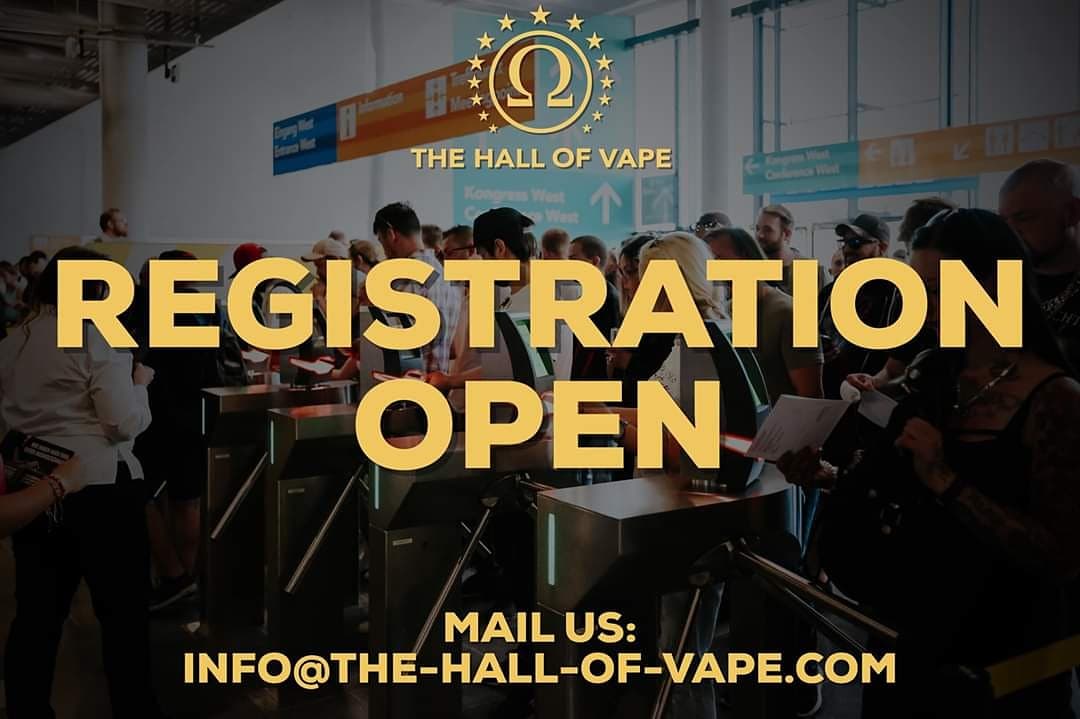
 The Hall of the Vape – Stuttgart 2020
The Hall of the Vape – Stuttgart 2020 
5 years anniversary: Registration open for exhibitors
The registrations have just been opened and the companies are now welcome to contact us. Please send us your stand request by e-mail to: info@the-hall-of-vape.de.
Please get in touch quickly, because the stands will be sold out very fast. We are looking forward to our next event in May in Stuttgart.
Yours Hall of Vape Team Team 
=======================================
 The Hall of the Vape – Stuttgart 2020
The Hall of the Vape – Stuttgart 2020 
5 Jahre Jubiläum: Registrierung für Aussteller geöffnet
Die Standregistrierungen wurden soeben eröffnet und die Firmen dürfen sich nun ab sofort gerne bei uns melden. Sendet uns Eure Standanfrage bitte gerne per E-mail an: info@the-hall-of-vape.de.
Bitte meldet euch zügig, denn die Stände werden sehr schnell vergriffen sein. Wir freuen uns ungemein auf unser nächstes Event im Mai in Stuttgart.
Euer The Hall of Vape Team

THE SMOKER’S SHOW TONIGHT AT 9PM EST!
SOMETHING NEW – THE BROMANCE RIDE ALONG!
A PBusardo Video – Bromance Ride Along Ep1 – To The Florida Trump Rally
Something new! The “Bromance Ride Along”.
Ride along with us and join us for random conversation. Some funny, some serious, some vaping, some not.
In this episode we travel to the Sunrise Florida Trump Rally on 11/26/19
Sit back, relax, and enjoy the ride!
Thank you to and please support the Premiere Taste Your Juice Sponsor…
The Video:
*NOTE: Any use of these videos in part or in their entirety without Phil Busardo’s expressed written consent is strictly prohibited.
OUR BABIES HAVE BEEN DELIVERED!
It’s a really unique experience and one I’d like to share with you.
I can remember over a year ago Dimitris and I sitting in the Innokin offices in Shenzhen China working with the engineers, designers, and project managers on the requirements for the next version of the Zenith. Doodling on the white board as our design documents started to become reality.
I can remember holding and trying older prototypes as we refined the design.
I can remember the importance of answering all the wants of those of you who use and enjoy the original Zenith.
Now they are here. This is the first time I’ve had the entire color range of the Zenith Pro at my house and in my hand. I’m so proud.
I’m proud that there are finally done and ready for people to enjoy.
I’m proud that we’ve been able to include the things that you have been asking for in this feature rich tank.
I’m EXTREMELY proud and humbled that when a person takes a Zenith Pro, or any of our products, and holds it up to their lips, it’s our product and not a cigarette. For me, this is what it’s all about.
Thank you to Innokin for believing in us and making our dreams a reality.
Thank you to YOU for using, enjoying, and making the Zenith so popular.
I sincerely hope you enjoy using the Zenith Pro as much as we have been. Use them in good health.
Happy Holidays everyone and Vape Happy!




FROM REGULATOR WATCH – SLAM DUNK? | Vaping Industry Confronts Opponents at White House | RegWatch
Here’s the latest from Brent Stafford at Regulator Watch:
It was a pinnacle moment for the U.S. vaping industry. At the White House on Friday, vaping industry leaders met face-to-face with anti-vaping opponents, public-health advocates and President Trump in what was billed as a “listening session” to address the surge in underage vaping. Issues concerning flavors (including a flavor ban) captivated the discussion and provided for much of the disagreement.
President Trump did more than just listen he also led the conversation, demonstrating a significant understanding of the importance of flavors to adult vapers and for the success of the industry.
In this episode of RegWatch get critical insights and reaction from inside the meeting with session participant and leading industry rep Tony Abboud, the Executive Director of the Vapor Technology Association, and Jon Glauser, VTA Executive Board Member and industry powerhouse.
Was the meeting a slam dunk? Find out!
Only on RegWatch by RegulatorWatch.com
Streamed: Sunday, November 24, 2019
Produced by: Brent Stafford
FROM THE VTA – New FDA Guidance: Permits Safety Modifications

FDA ISSUES NEW GUIDANCE: PERMITS SAFETY INNOVATIONS FOR PRE-8/8 PRODUCTS
Guidance Finally Permits Battery Modifications for Devices and
Flow Restriction Modifications for E-Liquids
November 25, 2019 – Washington, D.C. Over the past two years, VTA has repeatedly encouraged FDA to modify its August 8, 2016 innovation freeze. FDA’s strict August 8, 2016 deadline has prevented the introduction of any new products into the market, including any changes to any existing product that are not put through the multi-million-dollar, multi-year PMTA process. This means that even safety innovations, which in any other industry could be introduced into products rapidly, were barred by FDA.
VTA first raised this issue with then new Commissioner Scott Gottlieb during VTA’s first meeting in January 2018. In a follow-up meeting with FDA in June of 2018, VTA focused primarily on the important technological device advancements available in other parts of the world and the need for FDA to permit those technological modifications to enhance product safety and/or quality. VTA also submitted similar comments to FDA addressing this issue. Also, at its national conference in the summer of 2018, VTA placed a major emphasis on battery safety and was pleased to have Underwriters Laboratories present on their new UL 8139 standard.
Then, this year when the Consumer Product Safety Commission (CPSC) began enforcing a restricted flow requirement, VTA met directly with CPSC leadership but also raised the critical issue with FDA, explaining that the CPSC restricted flow requirement forced companies to modify products in a way that violated the FDA’s August 8, 2016 innovation freeze.
Today, the FDA finally responded and addressed the concerns that VTA has been raising. FDA made available a new Guidance for Industry entitled “Compliance Policy for Limited Modifications to Certain Marketed Tobacco Products” (Guidance). In the Guidance, FDA announces that it will exercise enforcement discretion to permit two types of modifications to new tobacco products that were on the market on August 8, 2016, and therefore covered by FDA’s current compliance policy for the premarket review requirements of the Federal Food, Drug, and Cosmetic Act:
- Modifications to battery-operated tobacco products solely to comply with UL 8139 (defined below); and
- Modifications to liquid nicotine products solely to comply with the Child Nicotine Poisoning Prevention Act of 2015 (CNPPA) flow restrictor requirements for liquid nicotine containers.
Device Manufacturers: Battery Modifications
FDA notes that there have been numerous reports of adverse experiences resulting from electronic nicotine delivery system (ENDS) battery failures. To address these concerns, UL (formerly known as Underwriters Laboratories), along with the U.S. Consumer Products Safety Commission (CPSC), FDA, Health Canada, the American National Standards Institute (INSI), and industry stakeholders, developed a voluntary industry standard, ANSI/CAN/UL 8139 Standard for Safety for Electrical Systems of Electronic Cigarettes and Vaping Devices (UL 8139).
The Guidance states that, for tobacco products that were on the market on August 8, 2016, and are modified solely to the extent necessary to comply with UL 8139, FDA does not intend to initiate enforcement action against such modified products on the basis of those modifications, which may include, but are not limited to:
- Addition of protective circuits and controls;
- Use of a different battery or cell;
- Changes to the wiring, terminals, fuses, or insulation;
- Modifying the product to incorporate 2-step activation;
- Changes to the housing material or construction to meet flammability, crush resistance, water exposure, venting, and temperature test requirements;
- Changes to the battery compartment to prevent user access to the battery or cells;
- Changes to the product design so that venting is away from the mouthpiece;
- Changes to the printed wiring boards to meet flame and temperature ratings; and
- Any other changes recommended under UL 8139.
Changes to the product that FDA indicates are not necessary to comply with UL 8139, and thus outside the scope of this enforcement discretion policy, include, but are not limited to:
- Changes to the coil design or other heating element (e.g., number of coils, material, resistance, length, or diameter);
- Changes in the wicking material or amount;
- Changes in the power supplied to the product (i.e., no changes to the number of batteries or cells); and
- Changes to the method of aerosolization of the e-liquid.
FDA recommends that, for products modified to comply with UL 8139 prior to the submission of a PMTA for the product, manufacturers submit a single application that describes both the product that was on the market on August 8, 2016, and the modified product. For a product modified after the submission of a PMTA, FDA recommends that the applicant file an amendment to the PMTA that describes the modifications implemented for UL 8139 compliance.
E-Liquid Manufacturers: Addition of Flow Restrictors to Liquid Nicotine Products
Effective July 26, 2016, the CNPPA requires that liquid nicotine containers that are “accessible through normal and foreseeable use by a consumer” (i.e., not sealed, pre-filled disposable containers inserted directly into ENDS devices) comply with the “special packaging” standards defined in the Poison Prevention Packaging Act. These standards require use of both child-resistant caps and flow restrictors, which are typically adapters added to the neck of a bottle to limit release of a liquid. 16 CFR 1700.15.
FDA notes that on March 8, 2019, the CPSC issued a letter to industry, “Nicotine Packaging Test Parameters,” providing the testing parameters that CPSC staff will use to assess compliance with the restricted flow requirement in 16 CFR 1700.15(d). On August 15, 2019, CPSC staff provided supplemental information on testing liquid nicotine packaging for rigid (i.e., glass) containers.
The Guidance states that, for liquid nicotine products that were on the market on August 8, 2016, and are modified solely to the extent necessary to comply with the CPSC restricted flow requirements, FDA does not intend to initiate enforcement action against such modified products on the basis of those modifications. FDA recommends that, for products modified in this manner prior to the submission of a PMTA, manufacturers submit a single application that describes both the product that was on the market on August 8, 2016, and the modified product. For a product modified after the submission of a PMTA, FDA recommends that the applicant file an amendment to the PMTA that describes the modifications implemented for CNPPA compliance.
VTA will continue to press FDA and the Administration for common-sense changes to its antiquated regulations that recognize the importance of regulating ENDS products as the technology products that they are, rather than as the cigarettes that they are trying to replace.
A BATTERY MOOCH POST: Do regulated mods protect our batteries and keep us safe?
Short answer = not really.
While a regulated mod will keep a battery from being overdischarged down to a low voltage, if the protection electronics are working properly, the mod has no idea what the current rating of the battery is or its condition.
Some mods measure temperature and shut down when hot but that’s just the temperature of one part of the regulator circuit board. It has nothing to do with the battery. A battery with too low a current rating for the way you vape could be run at way beyond its rating and the mod would have no idea that it’s happening. The mod can only act if the battery’s voltage drops too low.
A lot of regulated mods don’t even have fuses that can blow in order to disconnect the battery in case the mod’s electronics fail and the battery is being short-circuited.
Lastly, if there is damage to the wrap at the top of the battery you can short-circuit the battery when it’s inserted or removed from the mod. Even wrap damage on the side of the batteries can cause problems. If the metal cans of two batteries in a series-connected mod touch then one of the batteries will be short-circuited and could vent or burst. No circuitry in the mod will protect you from this.
So while a regulated mod can help protect us from short-circuits in the atomizer, and batteries that are nearing empty, mods will only protect themselves for any other problems. We still need to choose batteries with a high enough current rating for the way we vape and be vigilant about the condition of the wraps and top ring insulators of our batteries.
FROM CASAA – Weekend Heads Up Round Up (11/24/2019)

On Friday, November 22, heads of organizations in support of and against access to vapor products (and other low-risk nicotine products) met with President Trump and HHS Secretary Alex Azar in the Cabinet Room of the White House. While CASAA was not included in the meeting (in spite of multiple attempts to secure an invite), we believe that most of our views were represented. Specifically, AVA President Gregory Conley deftly reminded the people in the room that the May 2020 PMTA deadline remains a looming threat to consumer access to safer alternatives to smoking.
- The full recording of the meeting is available here.
While CASAA maintains its opposition to raising the purchase age for low-risk nicotine products to 21, it is clear that all industry stakeholders represented at the meeting believe that accepting the policy is the only productive way forward. Other proposals include stiffer penalties for retailers caught selling to minors and, of course, the well-funded effort to completely remove flavors other than tobacco from the market (see Gregory Conley’s comment on the matter starting here).
- Jim McDonald (Vaping360) “‘Small Vape’ Stood Up for Itself at the White House.” (Nov. 23)
Notably, representatives from NJOY and Reynolds American added their voices in support of keeping flavors available for adults and to be sold in specialty shops. (Reynolds has submitted its PMTA to FDA for Vuse, which is sold in flavors other than tobacco and menthol). JUUL, meanwhile, is continuing its apology tour by committing to remove mint from the market.
– – –
In spite of well funded campaigns to manipulate the views of lawmakers and the public, the vaping community is seeing growing support from new and familiar officials. With the holiday season upon us, now would be an excellent time to acknowledge our allies and thank them for their support.
If you have some time this week, please take a moment to send a card to our new friends. If you are particularly gracious (especially in the face of overwhelming negative public opinion), you might consider sending something thoughtful to one or two of vaping’s more outspoken opponents. 🙂
The contact information for just some of the officials who have stood up against pressure and misinformation from anti-nicotine groups, this year, is below.
- US Senator Ron Johnson (Letter to the President, 11.13.19)
120 Constitution Avenue, NE
HSOB- Hart Senate Office Building, Room 328
Washington, DC 20510-4905
- San Diego County Supervisor Kristin Gaspar (comment in opposition to a flavor ban)
1600 Pacific Highway, Room 335
San Diego, CA 92101
- Wisconsin State Representative Lakeshia Myers (Tweet)
2 East Main Street
State Capitol, Room 3 North
Madison, WI 53702
- Iowa Attorney General Tom Miller (Enduring support for sensible regulations)
Office of the Attorney General of Iowa
Hoover State Office Building
1305 E. Walnut Street
Des Moines IA 50319
Do you know lawmakers (local, state, or federal) who should be added to the list?
Fill out this form and tell us what they did or said to protect your access to vapor products. Let’s make sure they know that the vaping community supports them back.
– – –
Since October, vaping has been the subject of several hearings in congress. Committees have weighed in on updates from the CDC and FDA about lung injuries, a proposal to tax nicotine, a bill that would make vape mail more expensive and inaccessible for some, and legislation that would tighten up the tobacco control act to the point of choking out the vaping community. As noted above, through this process we’ve discovered who our allies in congress are. At the same time, we’ve seen a never ending stream of half-baked talking points delivered to committee room cameras designed to foment opposition and disdain for the vaping community. These anti-science skreeds are on full display as New Jersey Representative Frank Pallone ushers his save the children bill through the House Energy and Commerce Committee (YouTube).
After passing through the Energy and Commerce Committee, HR 2339 is heading to a vote by the full House of Representatives. Although no vote is scheduled, we are expecting to see this bill move in December, before congress goes home for the holiday break. CASAA is asking our members to contact officials via email, social media, and written letters (or holiday cards 🙂 ).
- If you would like to contact officials outside of one of our calls to action, you can find your officials, their physical mailing addresses, and social media accounts, here.
Stay safer,
Alex Clark, CEO
CASAA




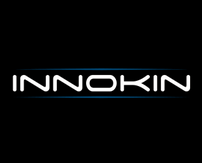
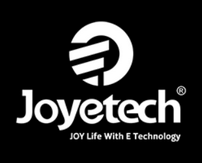
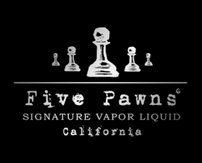
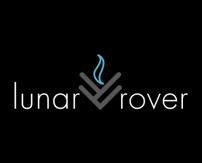

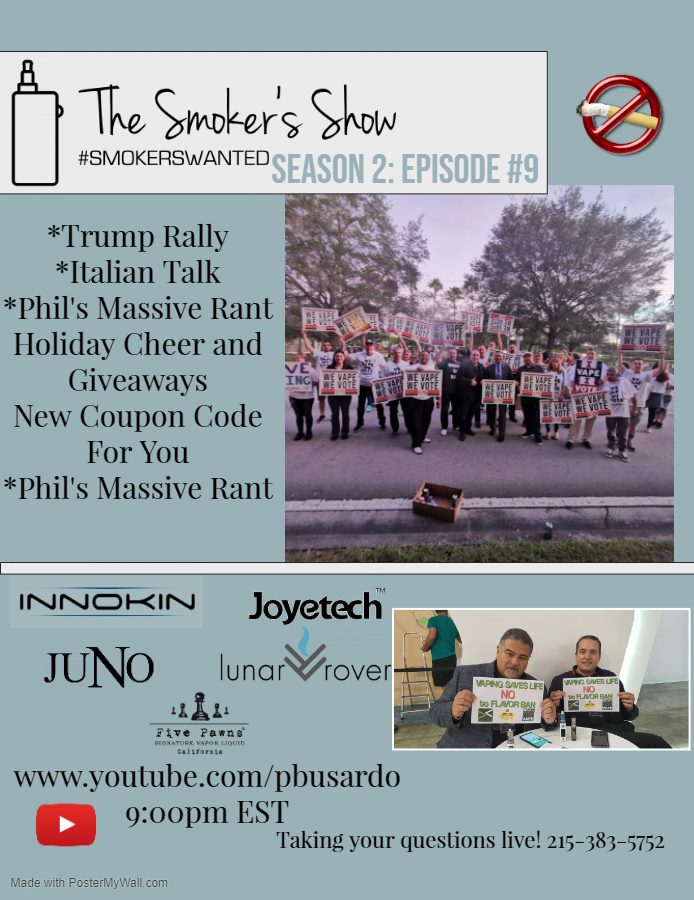
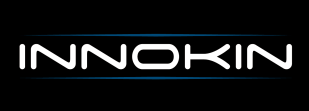


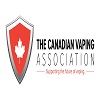
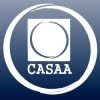

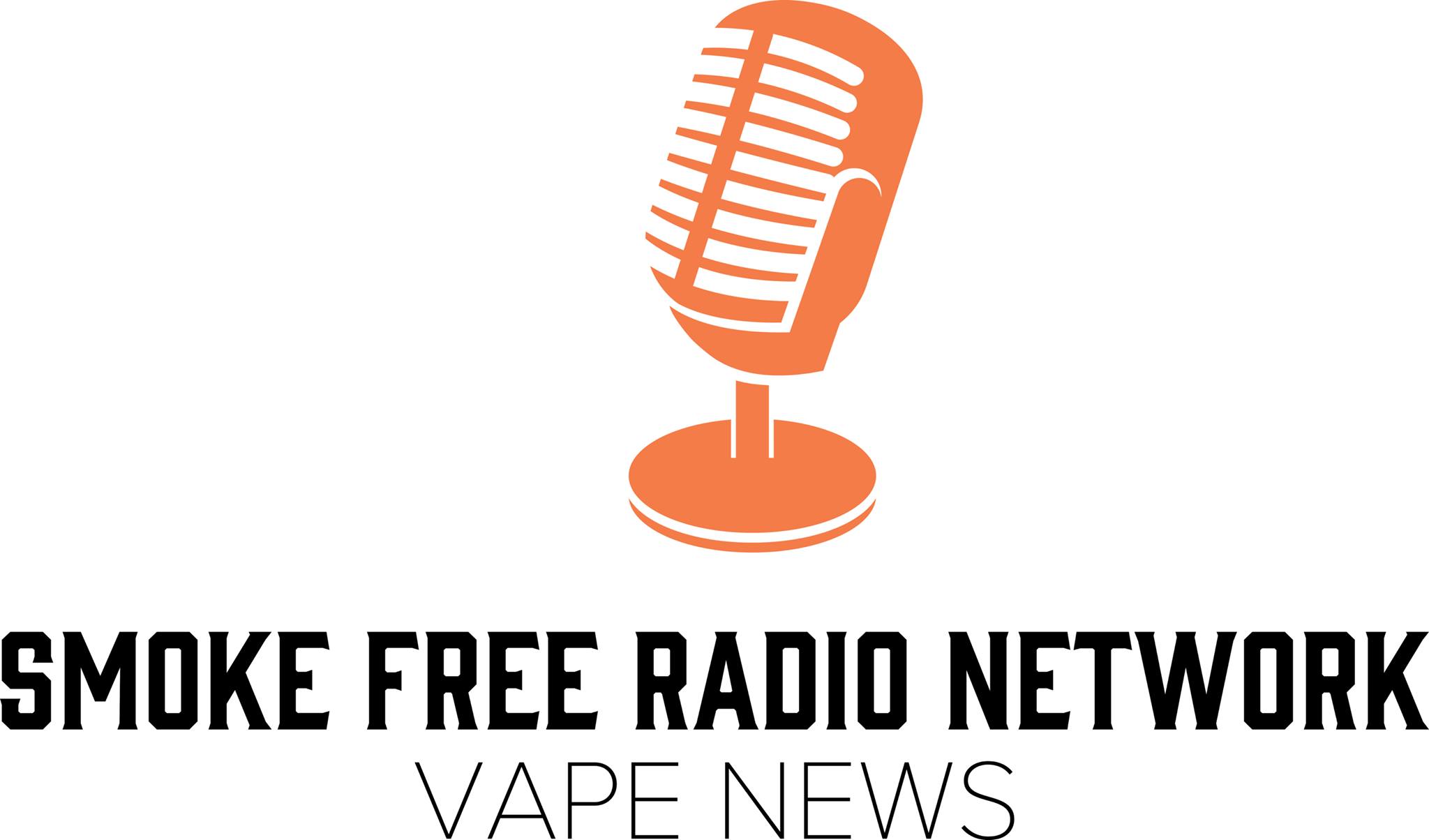



 Store
Store
